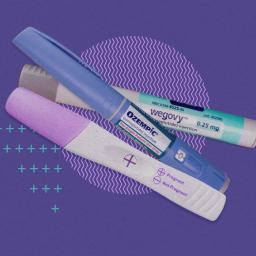 |
by Jessica Hamzelou on (#71SPP)
MIT Technology ReviewExplains: Let our writers untangle the complex, messy world of technology to help you understand what's coming next. You can readmore from the series here. Weight-loss drugs have been back in the news this week. First, we heard that Eli Lilly, the company behind the drugs Mounjaro and Zepbound, became the first healthcare...
|
MIT Technology Review
| Link | https://www.technologyreview.com/ |
| Feed | https://www.technologyreview.com/stories.rss |
| Updated | 2025-12-23 17:48 |
 |
by MIT Technology Review Insights on (#71S1G)
Today's IT leaders face competing mandates to do more (make us an AI-first' enterprise-yesterday") with less (no new hires for at least the next six months"). VMware has become a focal point of these dueling directives. It remains central to enterprise IT, with 80% of organizations using VMware infrastructure products. But shifting licensing models are...
|
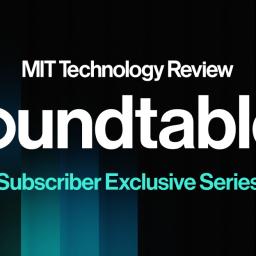 |
by Rhiannon Williams on (#71RBB)
This is today's edition ofThe Download,our weekday newsletter that provides a daily dose of what's going on in the world of technology. How AI is changing the economy There's a lot at stake when it comes to understanding how AI is changing the economy right now. Should we be pessimistic? Optimistic? Or is the situation...
|
 |
by The Editors on (#71R6P)
Separating AI reality from hyped-up fiction isn't always easy. That's why we've created the AI Hype Index-a simple, at-a-glance summary of everything you need to know about the state of the industry. Last year, the fantasy author Joanna Maciejewska went viral (if such a thing is still possible on X) with a post saying I...
|
 |
by MIT Technology Review Insights on (#71QB9)
For decades, business continuity planning meant preparing for anomalous events like hurricanes, floods, tornadoes, or regional power outages. In anticipation of these rare disasters, IT teams built playbooks, ran annual tests, crossed their fingers, and hoped they'd never have to use them. In recent years, an even more persistent threat has emerged. Cyber incidents, particularly...
|
 |
by Eileen Guo and Melissa Heikkilä on (#71PSV)
Welcome back to The State of AI, a new collaboration between the Financial Times and MIT Technology Review. Every Monday, writers from both publications debate one aspect of the generative AI revolution reshaping global power. In this week's conversation MIT Technology Review's senior reporter for features and investigations, Eileen Guo, and FT tech correspondent Melissa...
|
 |
by Will Douglas Heaven on (#71PSW)
In 2017, fresh off a PhD on theoretical chemistry, John Jumper heard rumors that Google DeepMind had moved on from building AI that played games with superhuman skill and was starting up a secret project to predict the structures of proteins. He applied for a job. Just three years later, Jumper celebrated a stunning win...
|
 |
by Rhiannon Williams on (#71PJY)
This is today's edition ofThe Download,our weekday newsletter that provides a daily dose of what's going on in the world of technology. Meet the man building a starter kit for civilization You live in a house you designed and built yourself. You rely on the sun for power, heat your home with a woodstove, and...
|
by Rhiannon Williams on (#71MSR)
This is today's edition ofThe Download,our weekday newsletter that provides a daily dose of what's going on in the world of technology. We're learning more about what vitamin D does to our bodies At a checkup a few years ago, a doctor told me I was deficient in vitamin D. But he wouldn't write me...
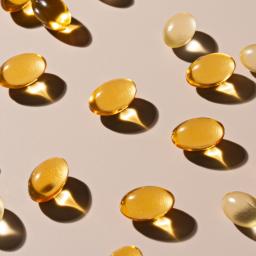 |
by Jessica Hamzelou on (#71MNA)
It has started to get really wintry here in London over the last few days. The mornings are frosty, the wind is biting, and it's already dark by the time I pick my kids up from school. The darkness in particular has got me thinking about vitamin D, a.k.a. the sunshine vitamin. At a checkup...
|
 |
by MIT Technology Review on (#71M8J)
Everything is a conspiracy theory now. MIT Technology Review's series, The New Conspiracy Age," explores how this moment is changing science and technology. Watch a discussion with our editors and Mike Rothschild, journalist and conspiracy theory expert, about how we can make sense of them all. Speakers: Amanda Silverman, Editor, Features & Investigations; Niall Firth,...
|
 |
by MIT Technology Review Insights on (#71M1S)
Digital resilience-the ability to prevent, withstand, and recover from digital disruptions-has long been a strategic priority for enterprises. With the rise of agentic AI, the urgency for robust resilience is greater than ever. Agentic AI represents a new generation of autonomous systems capable of proactive planning, reasoning, and executing tasks with minimal human intervention. As...
|
 |
by Rhiannon Williams on (#71KWR)
This is today's edition ofThe Download,our weekday newsletter that provides a daily dose of what's going on in the world of technology. Three things to know about the future of electricity The International Energy Agency recently released the latest version of the World Energy Outlook, the annual report that takes stock of the current state...
|
 |
by Casey Crownhart on (#71KRA)
One of the dominant storylines I've been following through 2025 is electricity-where and how demand is going up, how much it costs, and how this all intersects with that topic everyone is talking about: AI. Last week, the International Energy Agency released the latest version of the World Energy Outlook, the annual report that takes...
|
 |
by MIT Technology Review Insights on (#71K4N)
Manufacturing is getting a major system upgrade. As AI amplifies existing technologies-like digital twins, the cloud, edge computing, and the industrial internet of things (IIoT)-it is enabling factory operations teams to shift from reactive, isolated problem-solving to proactive, systemwide optimization. Digital twins-physically accurate virtual representations of a piece of equipment, a production line, a process,...
|
 |
by Rhiannon Williams on (#71JZP)
This is today's edition ofThe Download,our weekday newsletter that provides a daily dose of what's going on in the world of technology. Quantum physicists have shrunk and de-censored" DeepSeek R1 The news: A group of quantum physicists at Spanish firm Multiverse Computing claims to have created a version of the powerful reasoning AI model DeepSeek...
|
 |
by Caiwei Chen on (#71JVA)
A group of quantum physicists claims to have created a version of the powerful reasoning AI model DeepSeek R1 that strips out the censorship built into the original by its Chinese creators. The scientists at Multiverse Computing, a Spanish firm specializing in quantum-inspired AI techniques, created DeepSeek R1 Slim, a model that is 55% smaller...
|
 |
by MIT Technology Review Insights on (#71J8C)
The Ryder Cup is an almost-century-old tournament pitting Europe against the United States in an elite showcase of golf skill and strategy. At the 2025 event, nearly a quarter of a million spectators gathered to watch three days of fierce competition on the fairways. From a technology and logistics perspective, pulling off an event of...
|
 |
by MIT Technology Review Insights on (#71J8D)
Training an AI model to predict equipment failures is an engineering achievement. But it's not until prediction meets action-the moment that model successfully flags a malfunctioning machine-that true business transformation occurs. One technical milestone lives in a proof-of-concept deck; the other meaningfully contributes to the bottom line. Craig Partridge, senior director worldwide of Digital Next...
|
 |
by Caiwei Chen on (#71J8E)
Google today unveiled Gemini 3, a major upgrade to its flagship multimodal model. The firm says the new model is better at reasoning, has more fluid multimodal capabilities (the ability to work across voice, text or images), and will work like an agent. The previous model, Gemini 2.5, supports multimodal input. Users can feed it...
|
 |
by Rhiannon Williams on (#71J4Y)
This is today's edition ofThe Download,our weekday newsletter that provides a daily dose of what's going on in the world of technology. The State of AI: How war will be changed forever -Helen Warrell & James O'Donnell It is July 2027, and China is on the brink of invading Taiwan. Autonomous drones with AI targeting...
|
 |
by Helen Warrell and James O'Donnell on (#71HDM)
Welcome back to The State of AI, a new collaboration between the Financial Times and MIT Technology Review. Every Monday, writers from both publications debate one aspect of the generative AI revolution reshaping global power. In this conversation, Helen Warrell, FT investigations reporter and former defense and security editor, and James O'Donnell, MIT Technology Review's...
|
 |
by Rhiannon Williams on (#71H7Z)
This is today's edition ofThe Download,our weekday newsletter that provides a daily dose of what's going on in the world of technology. What is the chance your plane will be hit by space debris? The risk of flights being hit by space junk is still small, but it's growing. About three pieces of old space...
|
 |
by Tereza Pultarova on (#71H30)
MIT Technology Review Explains: Let our writers untangle the complex, messy world of technology to help you understand what's coming next. You can read more from the series here. In mid-October, a mysterious object cracked the windshield of a packed Boeing 737 cruising at 36,000 feet above Utah, forcing the pilots into an emergency landing....
|
 |
by Rhiannon Williams on (#71FE7)
This is today's edition ofThe Download,our weekday newsletter that provides a daily dose of what's going on in the world of technology. OpenAI's new LLM exposes the secrets of how AI really works The news: ChatGPT maker OpenAI has built an experimental large language model that is far easier to understand than typical models. Why...
|
 |
by Jessica Hamzelou on (#71FA3)
Earlier this week, the UK's science minister announced an ambitious plan: to phase out animal testing. Testing potential skin irritants on animals will be stopped by the end of next year, according toa strategy released on Tuesday. By 2027, researchers are expected to end" tests of the strength of Botox on mice. And drug tests...
|
by Courtney Dobson on (#71EX4)
 |
by Will Douglas Heaven on (#71ETF)
ChatGPT maker OpenAI has built an experimental large language model that is far easier to understand than typical models. That's a big deal, because today's LLMs are black boxes: Nobody fully understands how they do what they do. Building a model that is more transparent sheds light on how LLMs work in general, helping researchers...
|
by Will Douglas Heaven on (#71EM1)
Google DeepMind has built a new video-game-playing agent called SIMA 2 that can navigate and solve problems in a wide range of 3D virtual worlds. The company claims it's a big step toward more general-purpose agents and better real-world robots. Google DeepMind first demoed SIMA (which stands for scalable instructable multiworld agent") last year. But...
 |
by Rhiannon Williams on (#71EH5)
This is today's edition ofThe Download,our weekday newsletter that provides a daily dose of what's going on in the world of technology. AI is changing how we quantify pain Researchers around the world are racing to turn pain-medicine's most subjective vital sign-into something a camera or sensor can score as reliably as blood pressure. The...
|
 |
by Casey Crownhart on (#71EEE)
Last week, we hosted EmTech MIT, MIT Technology Review's annual flagship conference in Cambridge, Massachusetts. Over the course of three days of main-stage sessions, I learned about innovations in AI, biotech, and robotics. But as you might imagine, some of this climate reporter's favorite moments came in the climate sessions. I was listening especially closely...
|
 |
by Rhiannon Williams on (#71DNW)
This is today's edition ofThe Download,our weekday newsletter that provides a daily dose of what's going on in the world of technology. What it's like to be in the middle of a conspiracy theory (according to a conspiracy theory expert) -Mike Rothschild is a journalist and an expert on the growth and impact of conspiracy...
|
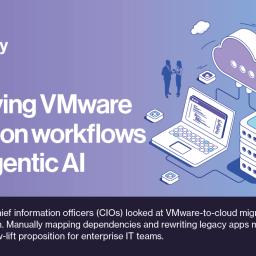 |
by MIT Technology Review Insights on (#71DH9)
For years, many chief information officers (CIOs) looked at VMware-to-cloud migrations with a wary pragmatism. Manually mapping dependencies and rewriting legacy apps mid-flight was not an enticing, low-lift proposition for enterprise IT teams. But the calculus for such decisions has changed dramatically in a short period of time. Following recent VMware licensing changes, organizations are...
|
 |
by Rhiannon Williams on (#71CVG)
This is today's edition ofThe Download,our weekday newsletter that provides a daily dose of what's going on in the world of technology. The quest to find out how our bodies react to extreme temperatures Climate change is subjecting vulnerable people to temperatures that push their limits. In 2023, about 47,000 heat-related deaths are believed to...
|
 |
by Casey Crownhart and Pilita Clark on (#71BEB)
Welcome back toThe State of AI, a new collaboration between the Financial Times and MIT Technology Review. Every Monday, writers from both publications debate one aspect of the generative AI revolution and how it is reshaping global power. This week, Casey Crownhart, senior reporter for energy at MIT Technology Review and Pilita Clark, FT's columnist,...
|
 |
by MIT Technology Review Insights on (#71C2S)
AI and quantum technologies are dramatically reconfiguring how cybersecurity functions, redefining the speed and scale with which digital defenders and their adversaries can operate. The weaponization of AI tools for cyberattacks is already proving a worthy opponent to current defenses. From reconnaissance to ransomware, cybercriminals can automate attacks faster than ever before with AI. This...
|
 |
by Rhiannon Williams on (#71C0H)
This is today's edition ofThe Download,our weekday newsletter that provides a daily dose of what's going on in the world of technology. Why it's so hard to bust the weather control conspiracy theory It was October 2024, and Hurricane Helene had just devastated the US Southeast. Representative Marjorie Taylor Greene of Georgia found an abstract...
|
 |
by Rhiannon Williams on (#71A8F)
This is today's edition ofThe Download,our weekday newsletter that provides a daily dose of what's going on in the world of technology. The first new subsea habitat in 40 years is about to launch Vanguard feels and smells like a new RV. It has long, gray banquettes that convert into bunks, a microwave cleverly hidden...
|
 |
by Mark Harris on (#71A43)
Vanguard feels and smells like a new RV. It has long, gray banquettes that convert into bunks, a microwave cleverly hidden under a counter, a functional steel sink with a French press and crockery above. A weird little toilet hides behind a curtain. But some clues hint that you can't just fire up Vanguard's engine...
|
 |
by Jessica Hamzelou on (#71A42)
This week, we heard that Tom Brady had his dog cloned. The former quarterback revealed that his Junie is actually a clone of Lua, a pit bull mix that died in 2023. Brady's announcement follows those of celebrities like Paris Hilton and Barbra Streisand, who also famously cloned their pet dogs. But some believe there...
|
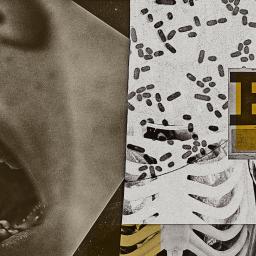 |
by Rhiannon Williams on (#719C4)
This is today's edition ofThe Download,our weekday newsletter that provides a daily dose of what's going on in the world of technology. How conspiracy theories infiltrated the doctor's office As anyone who has googled their symptoms and convinced themselves that they've got a brain tumor will attest, the internet makes it very easy to self-(mis)diagnose...
|
 |
by Casey Crownhart on (#7197R)
Picture it: I'm minding my business at a party, parked by the snack table (of course). A friend of a friend wanders up, and we strike up a conversation. It quickly turns to work, and upon learning that I'm a climate technology reporter, my new acquaintance says something like: Should I be using AI? I've...
|
 |
by Sophia Chen on (#718XT)
The US- and UK-based company Quantinuum today unveiled Helios, its third-generation quantum computer, which includes expanded computing power and error correction capability. Like all other existing quantum computers, Helios is not powerful enough to execute the industry's dream money-making algorithms, such as those that would be useful for materials discovery or financial modeling. But Quantinuum's...
|
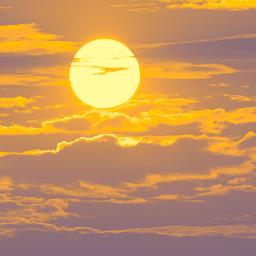 |
by Rhiannon Williams on (#718FS)
This is today's edition ofThe Download,our weekday newsletter that provides a daily dose of what's going on in the world of technology. Why the for-profit race into solar geoengineering is bad for science and public trust -David Keith is the professor of geophysical sciences at the University of Chicago and Daniele Visioni is an assistant...
|
 |
by Ken Mugrage on (#718BD)
This year, we've seen a real-time experiment playing out across the technology industry, one in which AI's software engineering capabilities have been put to the test against human technologists. And although 2025 may have started with AI looking strong, the transition from vibe coding to what's being termed context engineering shows that while the work...
|
 |
by David Keith, Daniele Visioni on (#717MN)
Last week, an American-Israeli company that claims it's developed proprietary technology to cool the planet announced it had raised $60 million, by far the largest known venture capital round to date for a solar geoengineering startup. The company, Stardust, says the funding will enable it to develop a system that could be deployed by the...
|
 |
by Rhiannon Williams on (#717HT)
This is today's edition ofThe Download,our weekday newsletter that provides a daily dose of what's going on in the world of technology. How AGI became the most consequential conspiracy theory of our time -Will Douglas Heaven, senior AI editor Are you feeling it? I hear it's close: two years, five years-maybe next year! And I...
|
 |
by John Thornhill and Caiwei Chen on (#716X1)
The State of AI is a collaboration between the Financial Times & MIT Technology Review examining the ways in which AI is reshaping global power. Every Monday for the next six weeks, writers from both publications will debate one aspect of the generative AI revolution reshaping global power. In this conversation, the FT's tech columnist...
|
 |
by Rhiannon Williams on (#716RA)
This is today's edition ofThe Download,our weekday newsletter that provides a daily dose of what's going on in the world of technology. Here's the latest company planning for gene-edited babies The news: A West Coast biotech entrepreneur says he's secured $30 million to form a public-benefit company to study how to safely create genetically edited...
|
 |
by Casey Crownhart on (#716PT)
Demand for copper is surging, as is pollution from its dirty production processes. The founders of one startup, Still Bright, think they have a better, cleaner way to generate the copper the world needs. The company uses water-based reactions, based on battery chemistry technology, to purify copper in a process that could be less polluting...
|